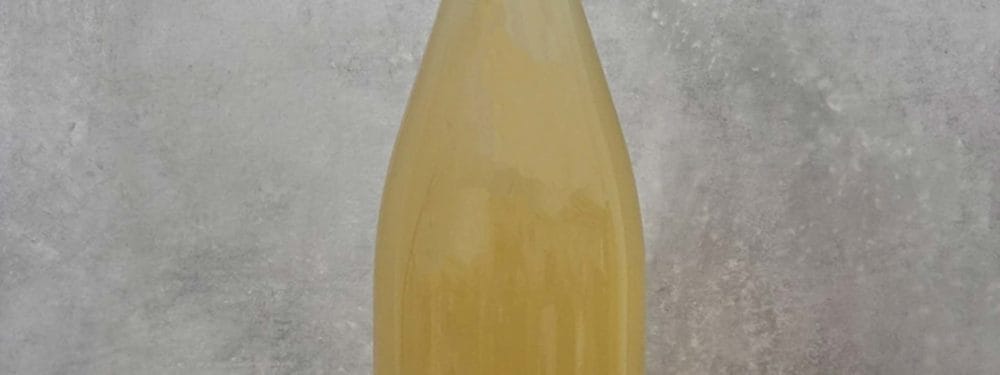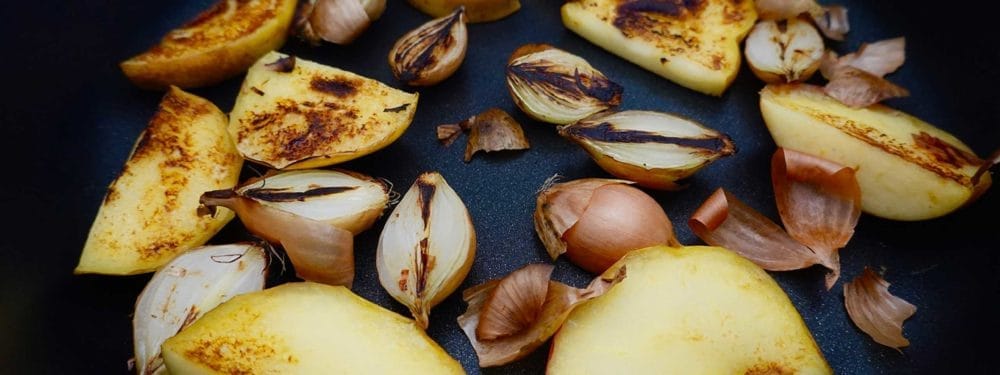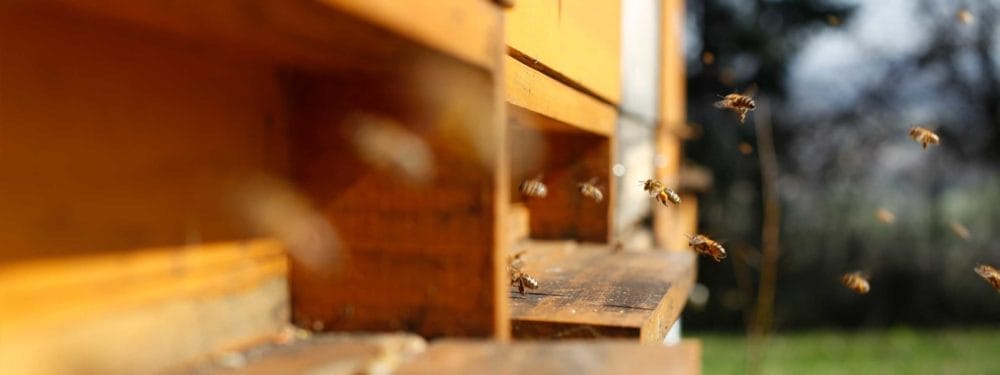We make apple mead
We are the sponsor of a vineyard and for the past year a bee colony has been buzzing in our name – so the combination of honey and wine is in our blood! Therefore, we start the year with apple mead honey wine, which immediately brings the products even closer together.
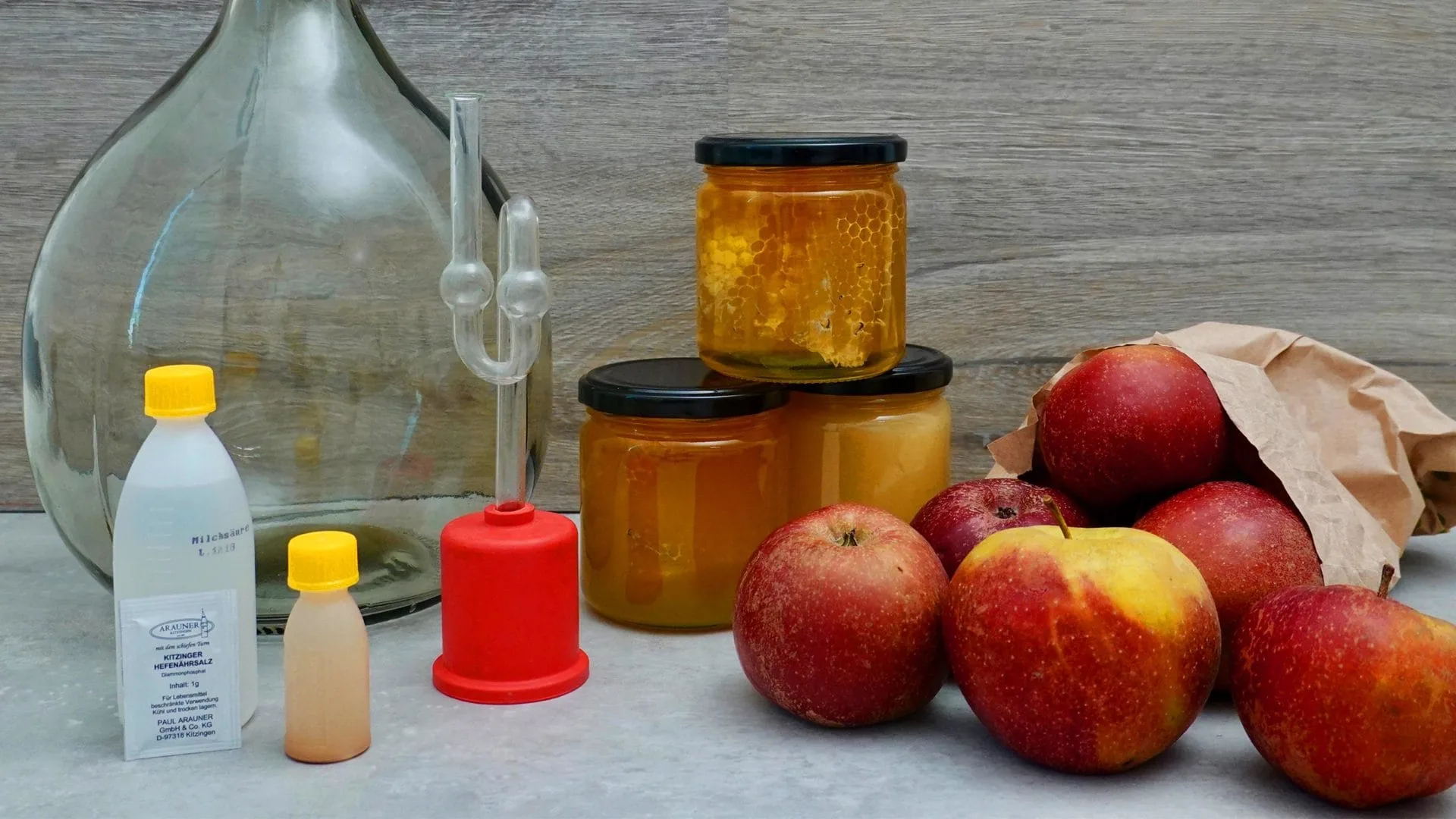
Ebbel…met
So the first project is Met. More precisely, apple mead, because mead can be varied at will and apples complement the honey with additional flavors. In addition, Frankfurt is a traditional apple region, so we combine the best of the region. For this we need water and honey and optionally some special ingredients such as pure cultured yeast or lactic acid. Jens, our man for the experiments in Berlin, has already prepared the first mead and in the meantime the honey-water-apple mixture is already bubbling away. But again from the beginning.
Met is known from Christmas and medieval markets, the Vikings or corresponding films. It is one of the earliest alcoholic beverages consumed by humans and was considered the drink of the gods, the heroes of Valhalla, but can be found in a wide variety of cultures around the world, from Ethiopia to South America – and now perhaps soon in our agency. Fun Facts: Honeymoon is supposedly derived from newlyweds drinking honey water together – well then, here’s to a good time together! Maybe it’s about the common path you want to travel: bees fly about 3 million kilometers for one liter of honey, after all. Honey and Wine is a song by the Hollies and Milk and Honey is an album by John Lennon.
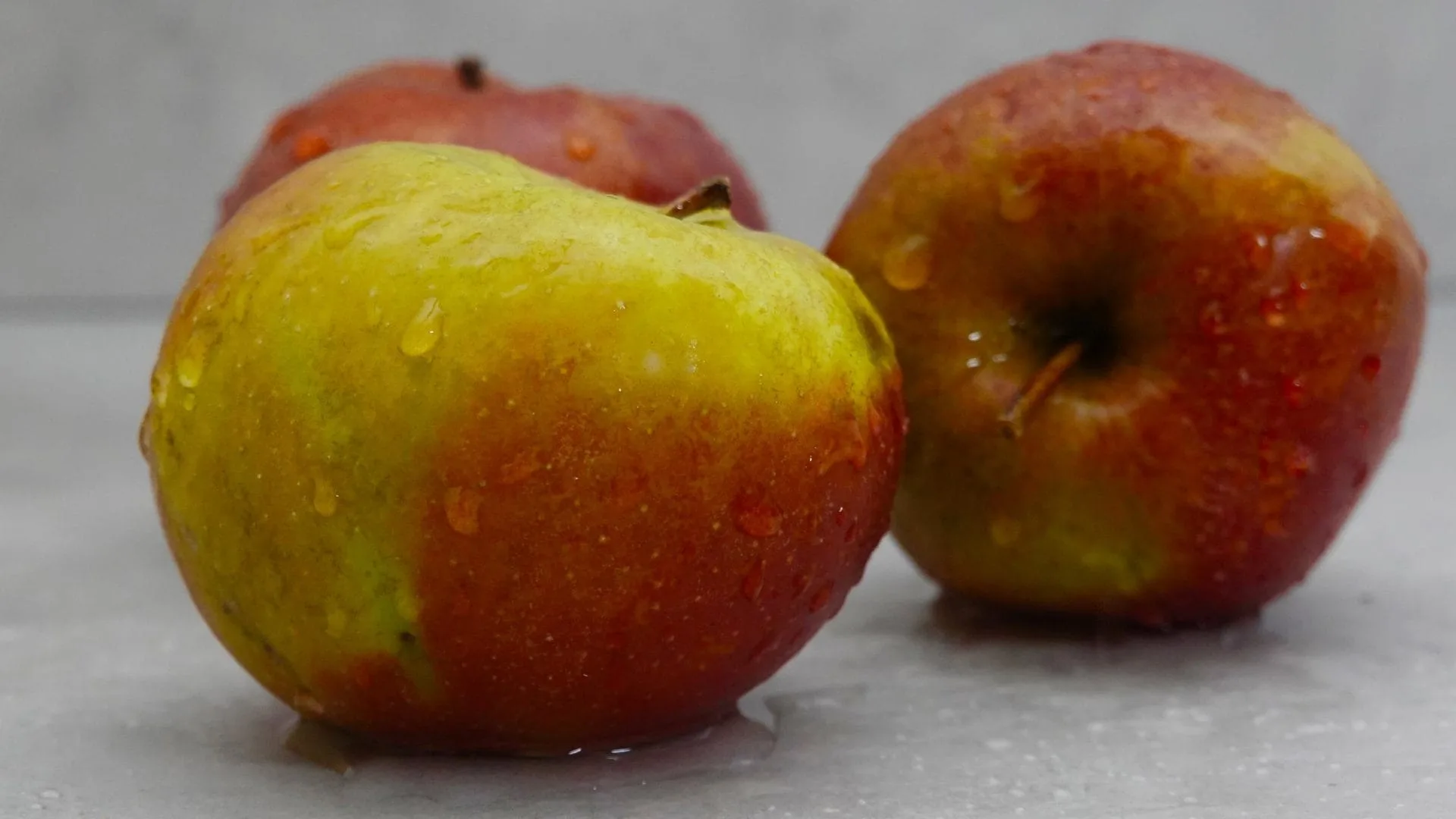
In addition to water and honey, we use for our mead approach a typical Frankfurt product that is of course also available in Berlin: Apples – so it should be a Äppel-Met. For this we use Boskoop, an old variety with a natural acidity, which we get from a farmer friend. We use the whole apple, because the many small seeds are also crushed during mixing, these give the juice an additional nutty, slightly marzipan-like flavor. We get a puree with a stunning array of flavors, a spoonful to taste, and you immediately feel the natural acidity that tickles each taste bud on your tongue. After we have mixed all the apples, the puree is first pressed through a sieve and then twisted through a muslin cloth. So we get a naturally cloudy apple juice for our apple mead.
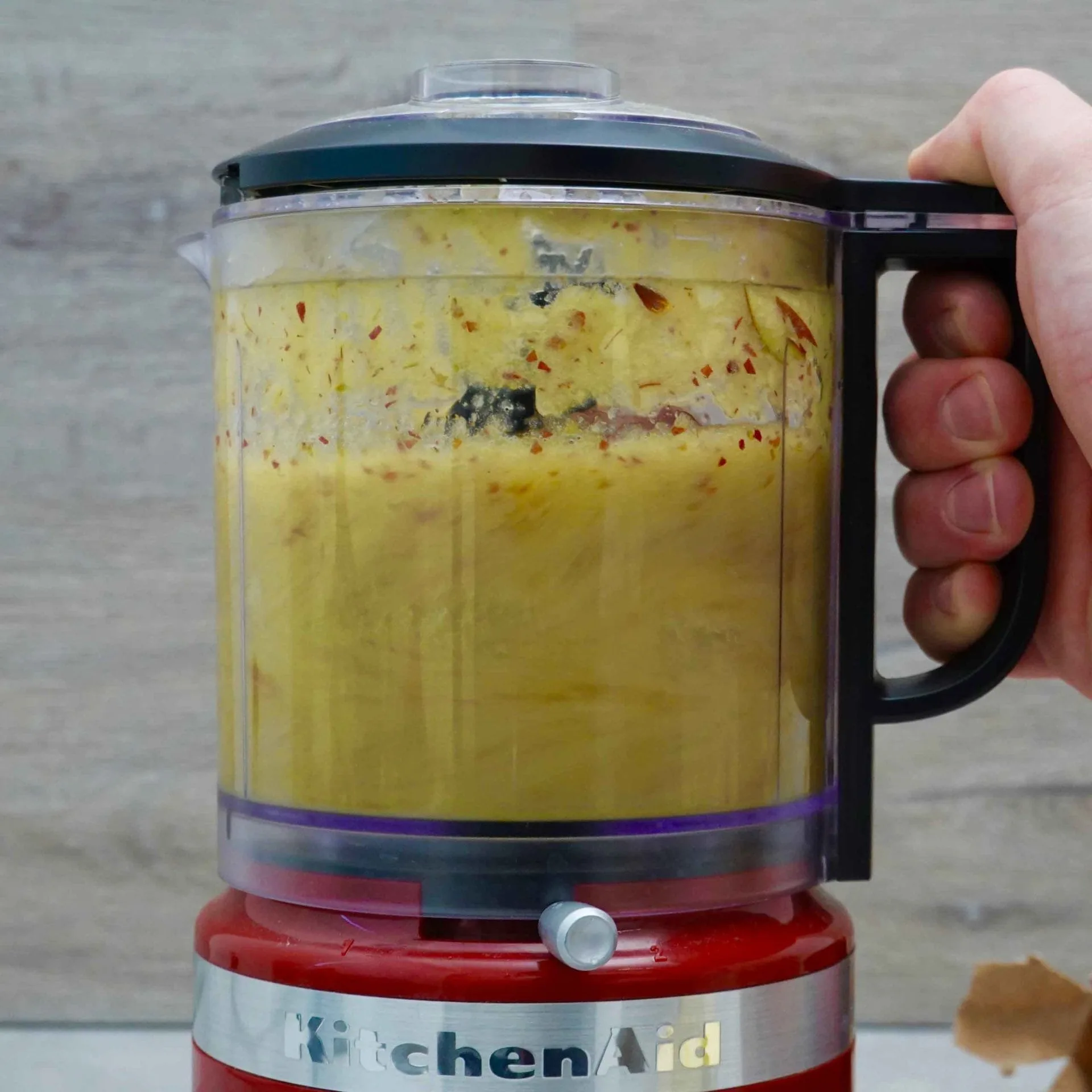
Meth production is based on an ancient technique: via fermentation, the tasty mead is created from the honey and the juice. For our first fermentation project, however, we opt for a classical approach, which means we also use some common tools such as pure cultured yeast. This introduces us to ingredients that are also used in winemaking, although they are mentioned less frequently.
Actually it needs only honey, water and time
An important trend at present is the omission of such aids, as is done by winemakers who produce natural wines. They rely on the yeasts present in the vines or in the cellar and work with a spontaneous fermentation. This can also work, but the result is less predictable and the risk is correspondingly higher that it will not work or the result will be unpalatable. That’s why we’re playing it safe for now, but we’ll be happy to try the wild version in the future. Jens gets pure cultured yeast from a wine store around the corner from him, as well as some tips regarding its use.
Where wine and honey flow …
However, the special main ingredient for our apple mead is and remains the honey of our own bee colony. The people take care in the summer that the flowers are pollinated and the fruit trees can bear fruit in the fall. Not only the production but also the food honey itself is fascinating: just dip your finger in it and you can perceive it with all your senses: Soft, smooth, floral, golden and very aromatic. We removed the honey from the jars and dissolved it in water. It is important not to exceed 40°C, otherwise the natural substances in the honey will be destroyed and the glucose crystals will break.
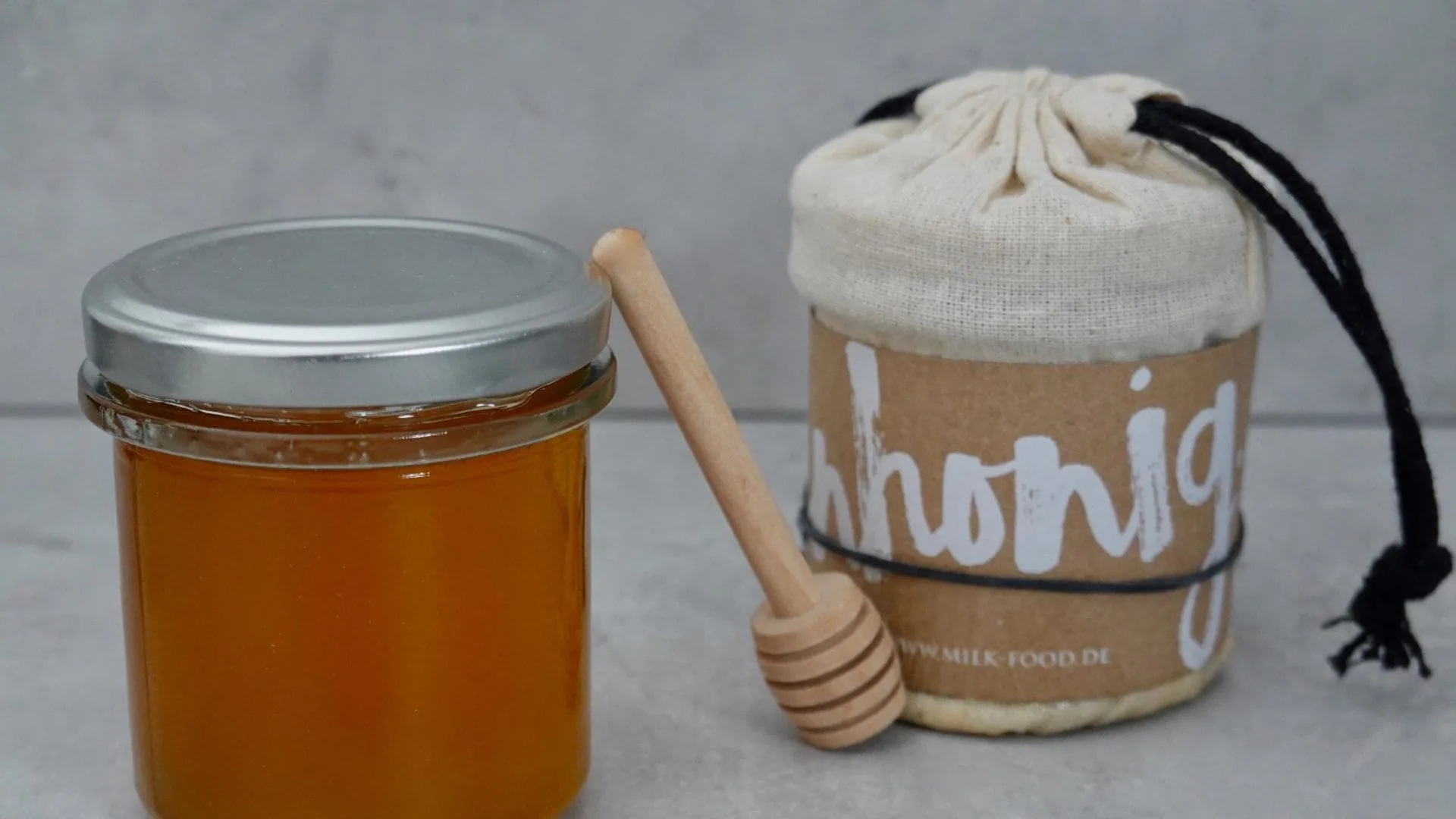
Then we added the yeast nutrient salt in powder form and enriched it with the apple juice. The yeast nutrient salt is responsible for the yeast having enough nitrogen. This nitrogen and sugar are important components in fermentation. Ripe and healthy fruits contain enough natural nitrogen. Whereas with our honey we have a very high sugar content.
Thus, we cannot guarantee the optimal nitrogen content and have to make do with a natural product. If we were to take the salt out of the process, there could be an unwanted interruption in fermentation, which means that fermentation would stop and instead of mead we would have a sweet broth that could start to rot. Now that we have mixed water, our own honey, yeast nutrient salt and the naturally cloudy apple juice, let everything cool down to 20°C.
Lactic acid and the pure cultured yeast are our last two ingredients. The lactic acid (80%) is helpful in mead because it balances the acidity or, as in our project, brings more acidity into play. The fruit acid of our naturally cloudy apple juice is not enough, moreover, the fruit acid is broken down during fermentation, so the wine also loses a little flavor. To counteract this, we resort to lactic acid. Unlike fruit acid, it is stable and is not degraded, so the later honey wine retains its fullness, it is also called its body. When measuring the required amount, we naturally also want to know how lactic acid smells. Surprisingly, we detected a slight smell of raisins.
We get going
The pure cultured yeast gets the fermentation going, we use a port wine yeast. This develops a strong spicy note during fermentation. The olfactory test shows here, intense aromas of wood, caramel and dried fruit. Such and similar are also found in a well-aged port wine. After reaching 20°C, first the lactic acid and then the pure cultured yeast are added to the apple juice-honey mixture, everything is stirred vigorously but with the utmost care. The resulting mead mixture remains in the air for another 30 minutes. The mixture is then poured into a 5 liter wine balloon.
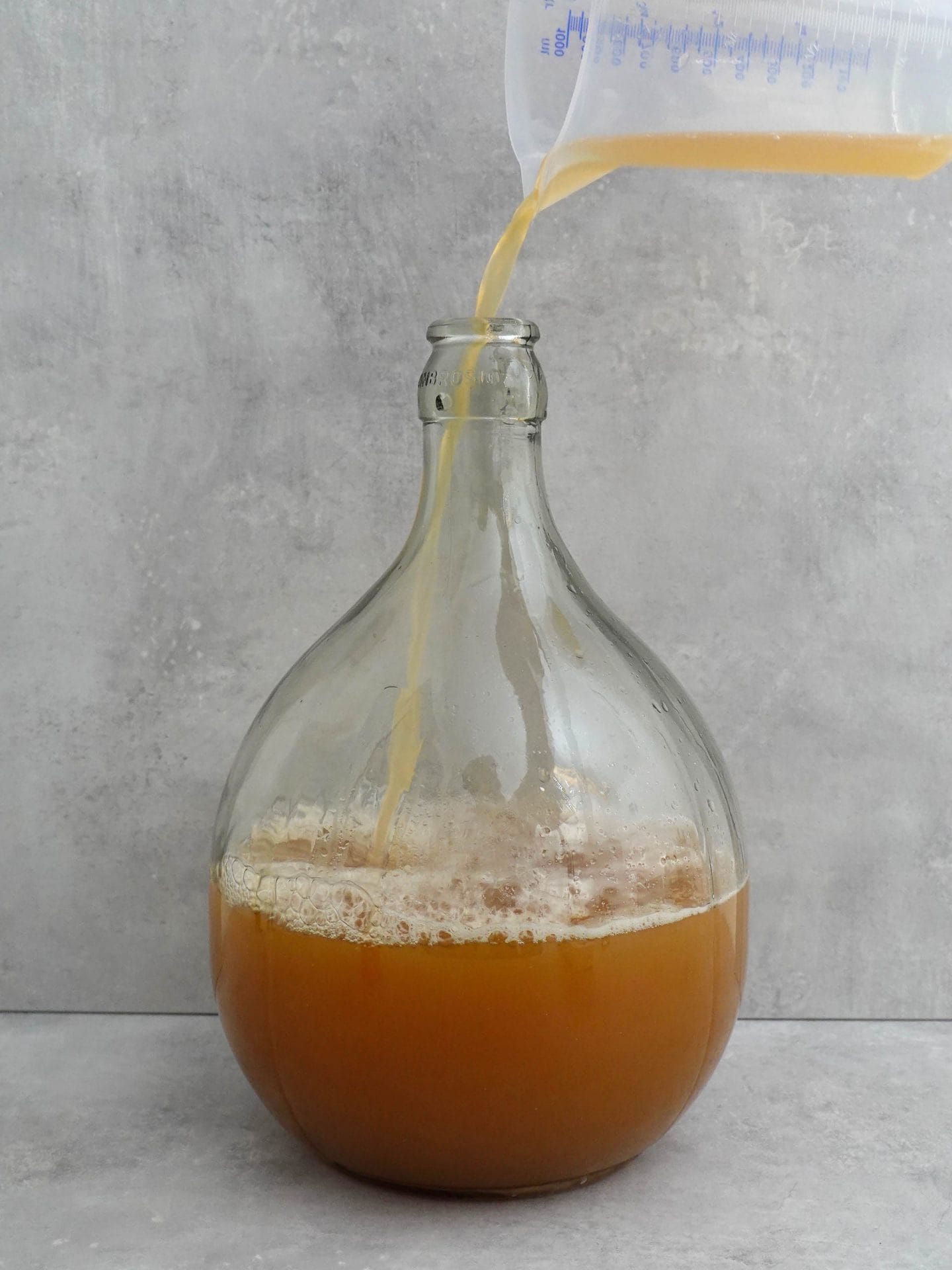
When filled into the fermentation balloon, the fresh aromas once again struck. An aroma of floral honey scents paired with spicy port notes, strong dried fruit, raisins and overall lactic sourness spread. After a short time the balloon is filled and could be closed. The balloon will now ferment and bubble away for the next 8 weeks. Every two days the balloon is swung through once.
To allow the fermentation to proceed in a controlled manner, the wine balloon is closed with a rubber stopper, into which a fermentation tube is placed. The tube has 2 small glass balls, these must always be half filled with water. This way, carbon dioxide can get out, but no air can get in! This is important because fermentation produces carbon dioxide, which must come out of the balloon. But it is much more important that no air gets in, otherwise extraneous fermentation could occur.
In the fermentation balloon
Day 1 and 2
The mead is now at about 20°C in the Food Lab. In the first two days, not much has happened yet, but we could observe that the first turbidities kept collecting at the bottom. These were released again during the daily swing through. The photo is nice to see how clear the mead can be in the fermentation process.
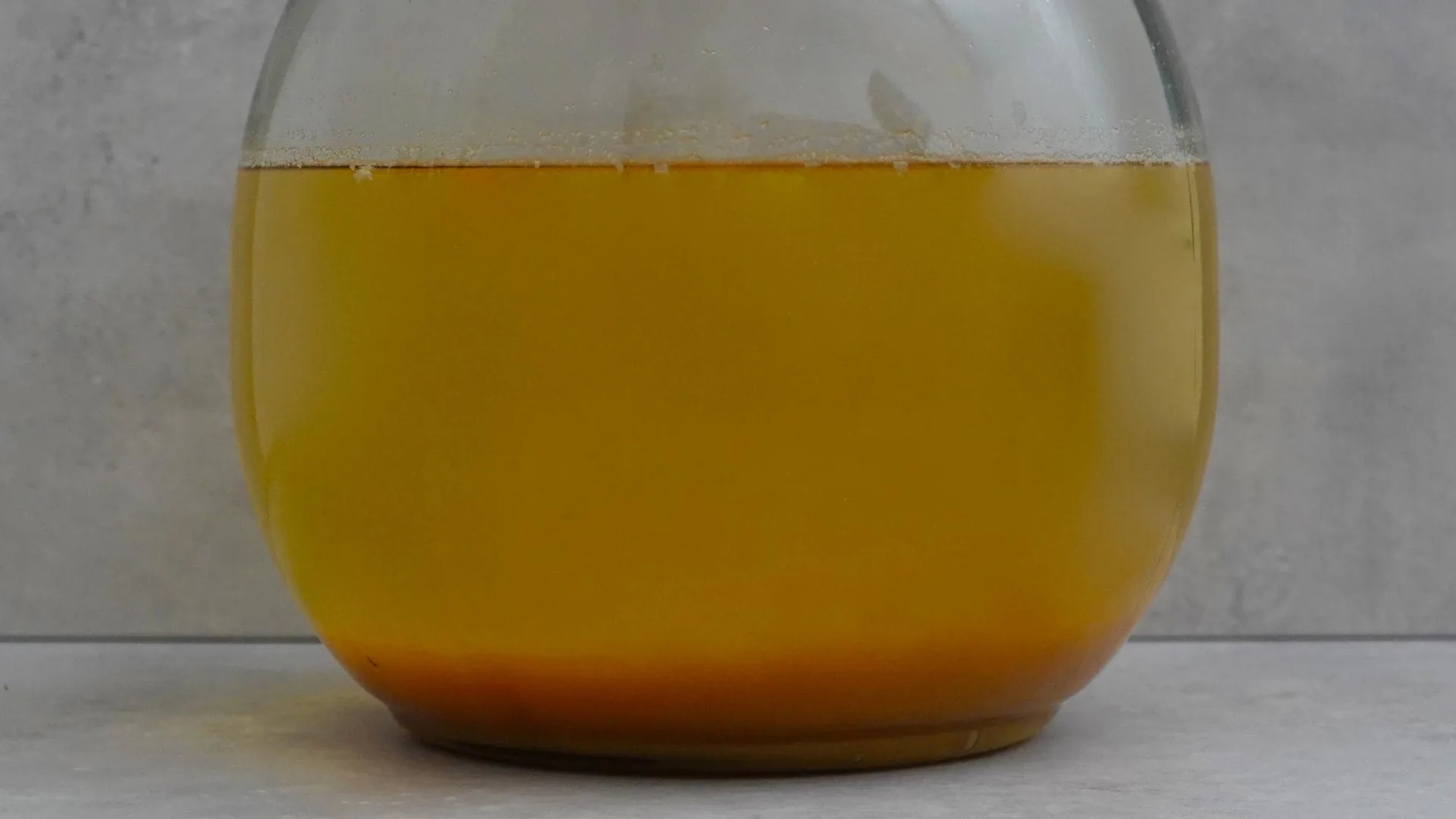
Day 3 and 4
On the third and fourth day, a kind of foam cap formed above the liquid. From this moment, one could visually see that something was moving in the fermentation balloon. In the glass tube, we were able to detect activity acoustically and visually. Thus, we observed how the first parts of the carbon dioxide formed escaped. In the process, the foam hat settled and rebuilt. From this point on, carbon dioxide kept escaping. The current temperature of the mead, measured at three points from the wine balloon is 20.5°C.
Day 5 till 12
In days five to twelve, small individual foam hats formed; these dissolved after a short time when the gas was released through the glass tube, but subsequently formed again. This process with formation of foam hats and disappearance took place over a period of 15 minutes.
What the next weeks will bring
In about six weeks we can draw off the honey wine, which means during this time turbid matter settles at the bottom, this silt binds yeasts and turbid matter. We will open the fermentation balloon for the first time at this time. From the outside, we were able to follow the process, but we can only test what really happened inside when we open it. We will use a food hose to draw off the clear mead, this will leave the turbidity at the bottom. There is no use for the turbid matter, the mead thus extracted will be put back into the fermentation carboy and left to ripen for another few weeks.
